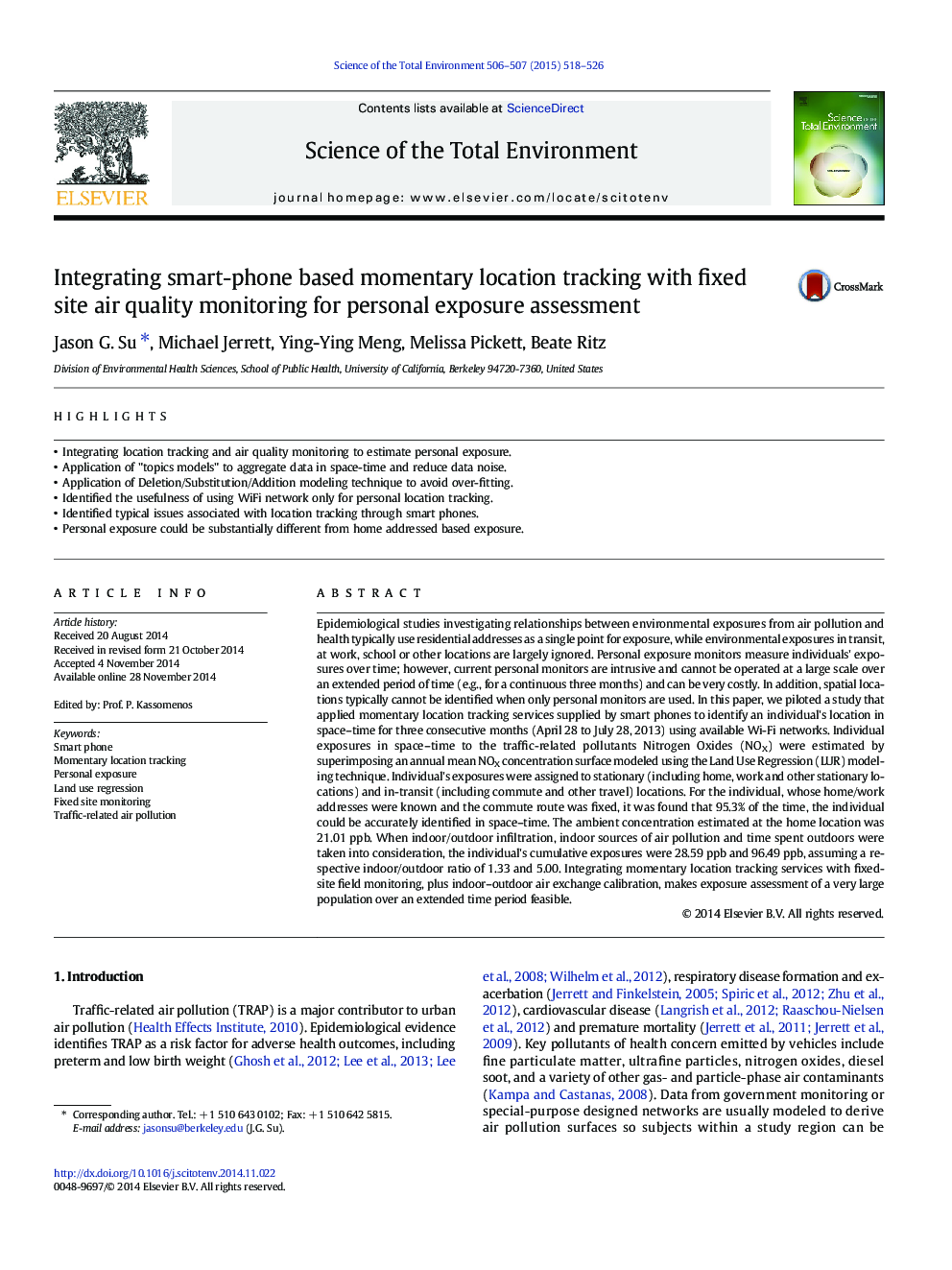| Article ID | Journal | Published Year | Pages | File Type |
|---|---|---|---|---|
| 6327767 | Science of The Total Environment | 2015 | 9 Pages |
Abstract
Epidemiological studies investigating relationships between environmental exposures from air pollution and health typically use residential addresses as a single point for exposure, while environmental exposures in transit, at work, school or other locations are largely ignored. Personal exposure monitors measure individuals' exposures over time; however, current personal monitors are intrusive and cannot be operated at a large scale over an extended period of time (e.g., for a continuous three months) and can be very costly. In addition, spatial locations typically cannot be identified when only personal monitors are used. In this paper, we piloted a study that applied momentary location tracking services supplied by smart phones to identify an individual's location in space-time for three consecutive months (April 28 to July 28, 2013) using available Wi-Fi networks. Individual exposures in space-time to the traffic-related pollutants Nitrogen Oxides (NOX) were estimated by superimposing an annual mean NOX concentration surface modeled using the Land Use Regression (LUR) modeling technique. Individual's exposures were assigned to stationary (including home, work and other stationary locations) and in-transit (including commute and other travel) locations. For the individual, whose home/work addresses were known and the commute route was fixed, it was found that 95.3% of the time, the individual could be accurately identified in space-time. The ambient concentration estimated at the home location was 21.01Â ppb. When indoor/outdoor infiltration, indoor sources of air pollution and time spent outdoors were taken into consideration, the individual's cumulative exposures were 28.59Â ppb and 96.49Â ppb, assuming a respective indoor/outdoor ratio of 1.33 and 5.00. Integrating momentary location tracking services with fixed-site field monitoring, plus indoor-outdoor air exchange calibration, makes exposure assessment of a very large population over an extended time period feasible.
Related Topics
Life Sciences
Environmental Science
Environmental Chemistry
Authors
Jason G. Su, Michael Jerrett, Ying-Ying Meng, Melissa Pickett, Beate Ritz,
